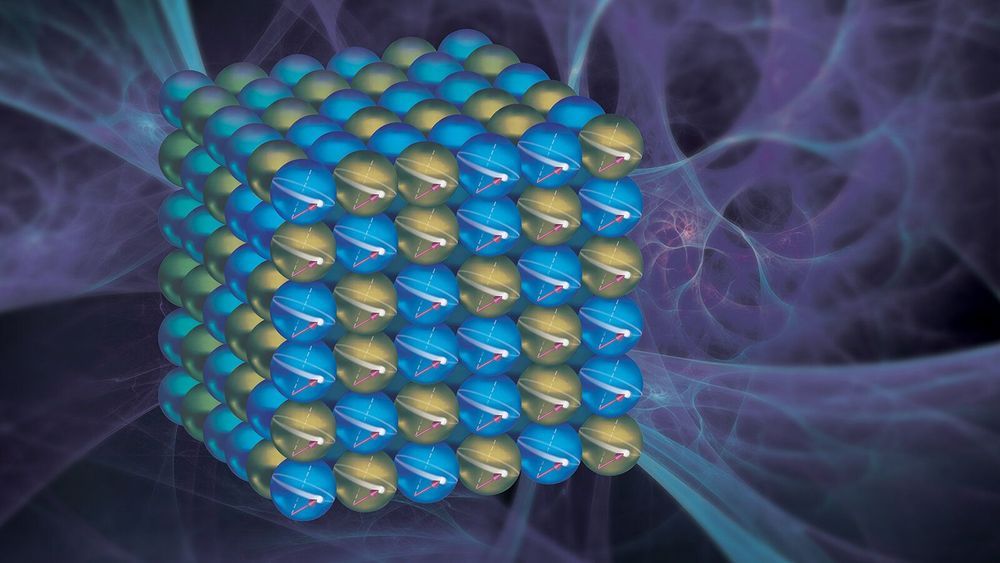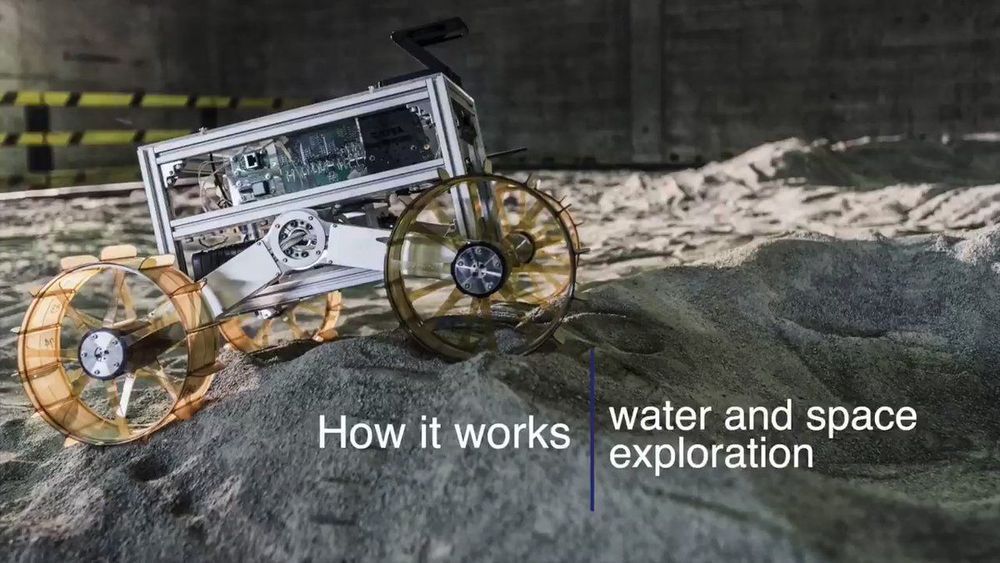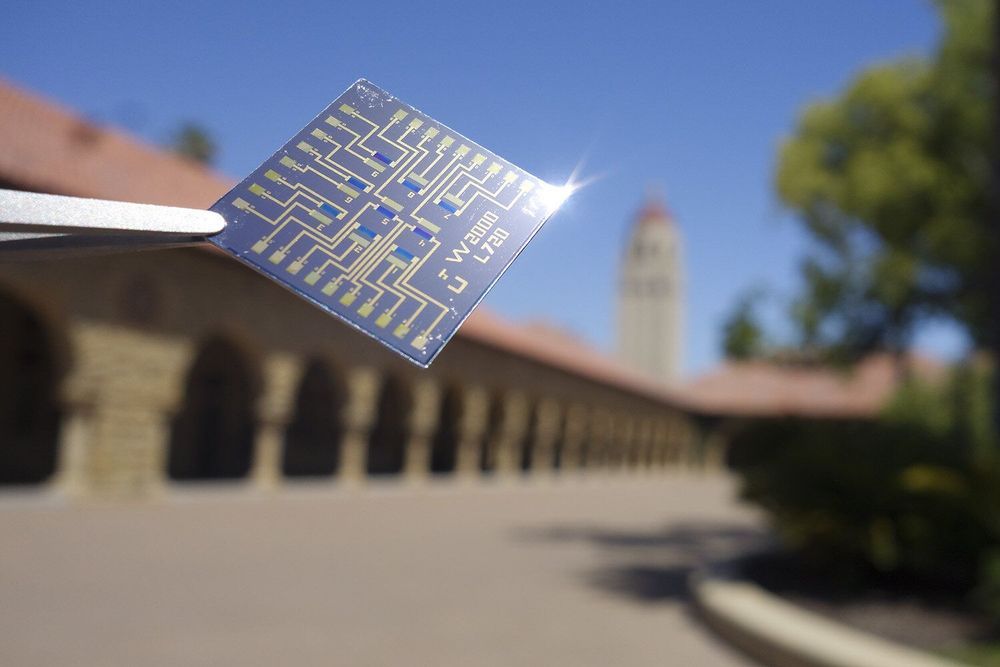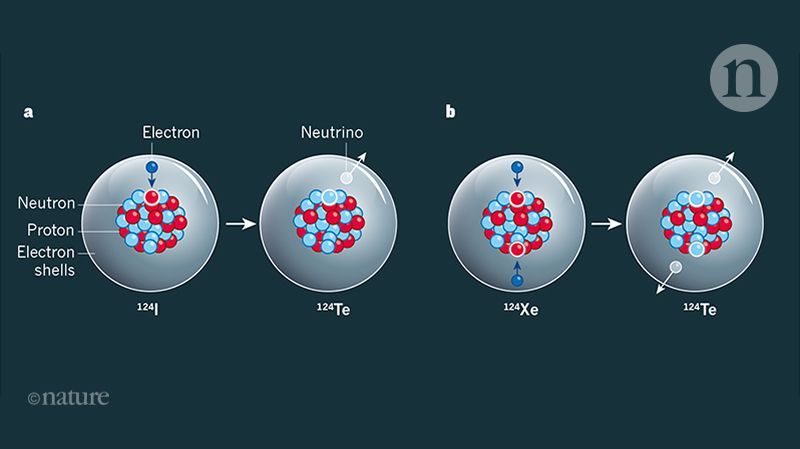Page 8901
Apr 26, 2019
Researchers discover surprising quantum effect in hard disk drive material
Posted by Quinn Sena in categories: materials, quantum physics
Scientists find surprising way to affect information storage properties in metal alloy.
Sometimes scientific discoveries can be found along well-trodden paths. That proved the case for a cobalt-iron alloy material commonly found in hard disk drives.
As reported in a recent issue of Physical Review Letters, researchers from the U.S. Department of Energy’s (DOE) Argonne National Laboratory, along with Oakland University in Michigan and Fudan University in China, have found a surprising quantum effect in this alloy.
Continue reading “Researchers discover surprising quantum effect in hard disk drive material” »
Researchers transmit data via a semiconductor laser, opening the door to ultra-high-speed Wi-Fi.
By Leah Burrows
Apr 26, 2019
How does water and #space exploration work and what role does @ispace_inc play?
Posted by Klaus Baldauf in category: space travel
Find out in this 1:30 min video from one of #Luxembourg’s prominent space #startups.
/video/1
Apr 26, 2019
Fast, efficient and durable artificial synapse developed
Posted by Klaus Baldauf in category: robotics/AI
The brain’s capacity for simultaneously learning and memorizing large amounts of information while requiring little energy has inspired an entire field to pursue brain-like – or neuromorphic – computers. Researchers at Stanford University and Sandia National Laboratories previously developed one portion of such a computer: a device that acts as an artificial synapse, mimicking the way neurons communicate in the brain.
In a paper published online by the journal Science on April 25, the team reports that a prototype array of nine of these devices performed even better than expected in processing speed, energy efficiency, reproducibility and durability.
Looking forward, the team members want to combine their artificial synapse with traditional electronics, which they hope could be a step toward supporting artificially intelligent learning on small devices.
Continue reading “Fast, efficient and durable artificial synapse developed” »
Apr 26, 2019
This 3D-printed beehive could be our future home on Mars
Posted by Klaus Baldauf in categories: 3D printing, habitats, space
Would you like to spend a night in a future 3D-printed Mars habitat? You might get the chance.
Apr 26, 2019
NASA’s Hubble Didn’t Detect Exomoon After All, Say Astronomers
Posted by Bruce Dorminey in category: space
The much heralded 2018 detection of a Neptune-sized moon circling exoplanet Kepler 1625b now seems very much in doubt.
Apr 26, 2019
China Says It’ll Have a Moon Base in Ten Years
Posted by Genevieve Klien in category: space
Apr 26, 2019
Northrop Grumman highlights benefits of Orbital ATK acquisition
Posted by Genevieve Klien in categories: business, innovation
WASHINGTON — Nearly a year after Northrop Grumman’s acquisition of Orbital ATK closed, company executives say they’re getting the benefits they expected from the deal in terms of cost savings and new business.
In a quarterly earnings report issued April 24, Northrop reported total sales of $8.19 billion and net earnings of $863 million for the first quarter of 2019. The company had total sales of $6.74 billion and net earnings of $840 million for the same quarter of 2018.
The increase in sales was due almost entirely to the addition of the Innovation Systems business unit, the former Orbital ATK. That unit generated $1.44 billion in sales for the quarter. In the first quarter of 2018, the last full quarter Orbital ATK was still an independent company, it reported sales of $1.31 billion.
Continue reading “Northrop Grumman highlights benefits of Orbital ATK acquisition” »
Apr 26, 2019
Dark-matter detector observes exotic nuclear decay
Posted by Derick Lee in categories: cosmology, particle physics
From the point of view of nuclear theory, the decay rates of both two-neutrino and neutrinoless double electron capture can be connected to quantities called nuclear matrix elements. Such quantities contain information about nuclear structure that is extracted from nuclear models and can be applied by researchers in the field of nuclear-structure theory.
For half a century, our view of the world has been based on the standard model of particle physics. However, this view has been challenged by theories that can overcome some of the limitations of the standard model. These theories allow neutrinos to be Majorana particles (that is, they are indistinguishable from their own antiparticles) and predict the existence of weakly interacting massive particles (WIMPs) as the constituents of invisible ‘dark matter’ in the Universe. Majorana neutrinos mediate a type of nuclear decay called neutrinoless double-β decay, an example of which is neutrinoless double electron capture. A crucial step towards observing this decay is to detect its standard-model equivalent: two-neutrino double electron capture. In a paper in Nature, the XENON Collaboration reports the first direct observation of this process in xenon-124 nuclei, using a detector that was built to detect WIMPs.

Continue reading “Dark-matter detector observes exotic nuclear decay” »


















